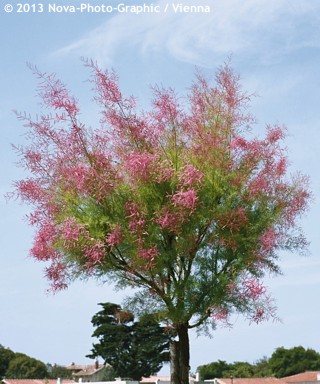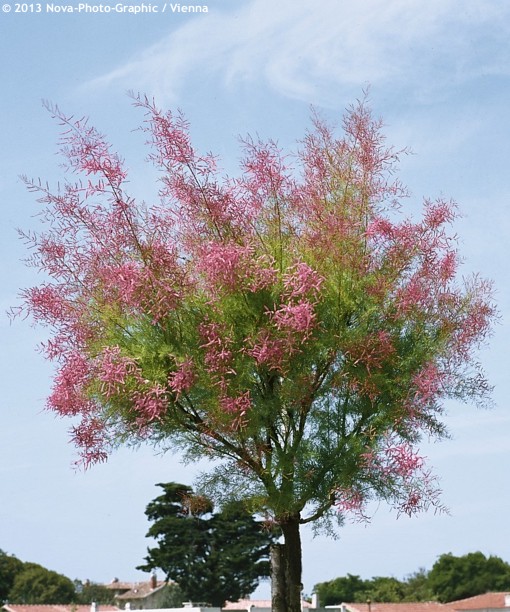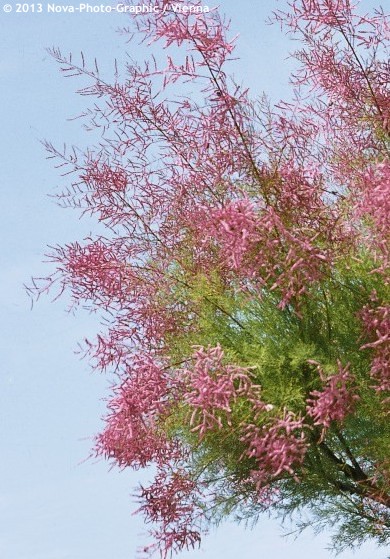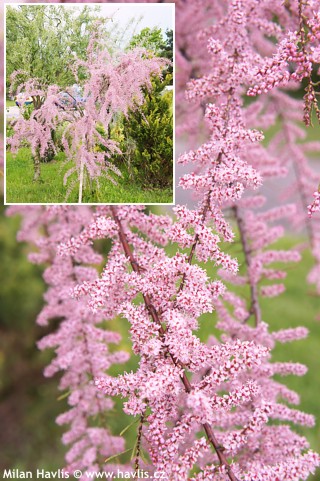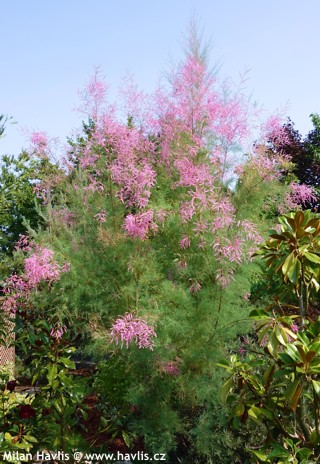Tamarix ramosissima 'Rosea' tamarisk, saltcedar
size/type
small tree,small tree
usual height
2-4m
usual width
2-3m
leaves
deciduous broadleaf
colour of leaves
flowers
showy
colour of flowers
blooming time
August-September
location
full sun
soil type
any (acidic to alkaline)
soil moisture requirements
evenly moist (dislikes drought)
USDA zone (lowest)
2 (down to -45°C)
winter protection
for zone 5+6

for zone 7

categorized
Tamarix
Synonyms:- tamarix pentandra
- tamarix hispida var. aestivalis
Description of the plant:
Tamarisk (salt cedar) is a beautiful plant with tiny leaves and profusion of flowers from mid to late summer. Rosea is a variety whose flowers make erect, up to 7 cm long racemes of small flowers with more pronounced pink shade. Deciduous leaves are scale-like, mid green to blue green, very small. Overall appearance is feathery and very fluffy thanks to which the plant looks great in a Mediterranean-style landscape, or combined with other larger plants with leathery foliage. Tamarisk grows medium fast and looks best when pruned annually. Cut back 80% of previous year's growth in early spring to encourage new growth with plentiful of flowers on a dense and compact shrub or crown.
Comparison of salt cedars cultivated in Central Europe:
- tamarix ramosissima – blooms in summer, upright habit, leaves are more blue-green
- tamarix parviflora – blooms in spring, arching, leggy habit if unpruned, leaves are more green
Grow tamarisk in full sun, dry or medium moist soil. It does not need a specific pH or too fertile soil. However, if you prune it hard a portion of a slow-release fertilizer is recommended. Very hardy to about -40°C (USDA zone 2).
Last update 16-03-2013; 16-02-2015
QUICK PRICE OVERVIEW
CURRENTLY SOLD OUT












